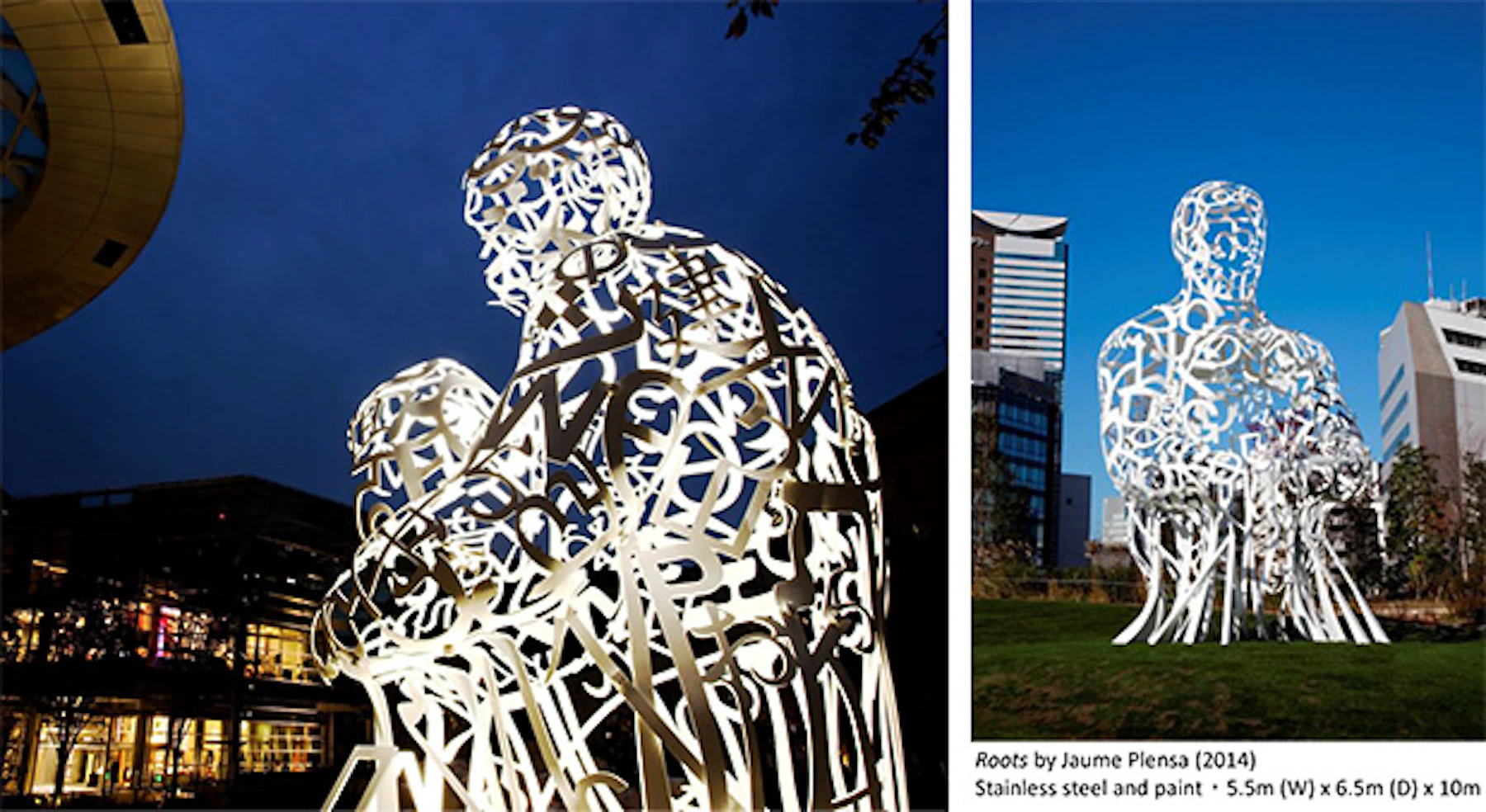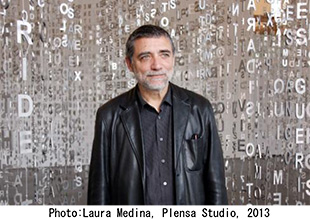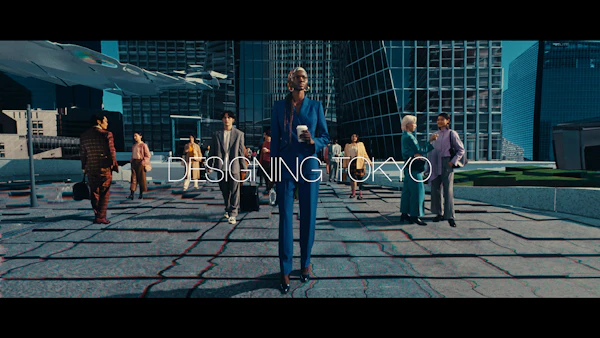【Toranomon Hills】Mori Building to Unveil Universally Symbolic Sculpture at Toranomon Hills
"Roots" by noted Spanish artist Jaume Plensa symbolizes cultural diversity, humanity and unity
Tokyo, November 28, 2014 - Mori Building, a leading urban landscape developer, announced today that it will unveil a large sculpture, entitled Roots, by Spanish artist Jaume Plensa that conveys the diversity, humanity and unity of global culture. The unveiling will take place in a ceremony held at Toranomon Hills, Tokyo's newest center for global business and culture, today.

Roots, which measures 5.5m (w) x 10m (h) x 6.5m (d), depicts the form of a seated person. Constructed with letters and characters of eight languages - Arabic, Chinese, Greek, Hebrew, Helvetic, Hindi, Japanese and Russian -- the sculpture expresses the universal nature of global culture and the bonds that tie humanity together.
"The letters and characters individually symbolize memories and history of different people, but connecting them together creates new significance," said Mr. Plensa.
"By celebrating both life and global community/harmony, I hope this work serves as a bridge to connect global people and cities through peace. Japan is a special country where traditions and advanced technologies coexist, which inspired me with the impression of new culture sprouting from 'Roots' sunk in this fertile soil."
Roots also expresses Mori Building's vision of new culture and lifestyles taking root around Toranomon Hills to give life to new ideas and innovation for the revitalization of the Toranomon area.
"The work crystallizes the essence of an ideal global society," said Mori Building President and CEO Shingo Tsuji. It also embodies Tokyo's power as a magnet for art and culture. Mori Building envisions Tokyo becoming an internationally competitive world-class city that will attract people, capital, culture and information from all over the world as the city progresses toward Tokyo 2020."
About Mr. Jaume Plensa
Jaume Plensa is a leading international artist from Spain who combines art with conceptual and philosophical messages in works that have been praised for their quality of form and depth of concept. Born in Barcelona in 1955, Plensa has received numerous acclamations, including the 2013 Velazquez Prize, an annual award presented by Spain's Ministry of Culture to recognize contributions to Spanish and Spanish-American culture in the field of plastic arts. His works include the stainless steel and glass creation Breathing, which was dedicated by Secretary-General of the United Nations Ban Ki-moon to honor journalists who have died while pursuing their profession.

About Mori Building
Tokyo-based Mori Building Co., Ltd., creates groundbreaking concepts for urban living throughout Japan and the rest of Asia. As one of Japan's leading urban landscape developers, Mori Building engages in urban redevelopment, real estate leasing and management and consultation covering areas such as leisure complexes, offices and high-class residences. Examples include Roppongi Hills complex in Tokyo and Shanghai World Financial Center. The company also is involved in culture, art and "town management" activities that keep communities functioning and thriving, including disaster preparedness, security, logistics, etc., as well as planning and operating civic-minded facilities such as museums, galleries, observatories, educational and conference facilities and private clubs. Mori Building was established in 1959.
About Toranomon Hills
Rising 52 stories and 247 meters in height, Toranomon Hills features expansive pillar-free office spaces designed to the highest specifications, one of Tokyo's largest conference facilities, luxury residences, 24 shops and restaurants serving Japanese and western haute-cuisine, and a 6,000m2 pocket of open space and greenery. The multi-use high-rise also houses Andaz Tokyo, Hyatt's first boutique luxury hotel in Japan to provide top-level accommodation for international business and leisure travelers.
The birth of Toranomon Hills was made possible by Mori Building's "Vertical Garden City" concept, which ingeniously incorporates the property and Loop Road No. 2's underground tunnel. The concept makes intelligent use of ultra-high-rise structures and underground space for extra compactness, thereby enhancing the efficiency of urban infrastructure with fully integrated offices, residences, hotels, commercial facilities and road systems.
Connected seamlessly with an arterial thoroughfare, Toranomon Hills will be the pivotal crossroads of the coming Tokyo 2020 Olympic Village and new National Stadium, as well as the Imperial Palace and business and administrative districts surrounding this world-class Asian headquarters in central Tokyo.
Please visit: http://toranomonhills.com/en/
Moichi Watanabe, Soan Xu, or Yu Yagi, Public Relations, Mori Building Co., Ltd.
TEL:03-6406-6606
FAX:03-6406-9306
E-mail:koho@mori.co.jp


